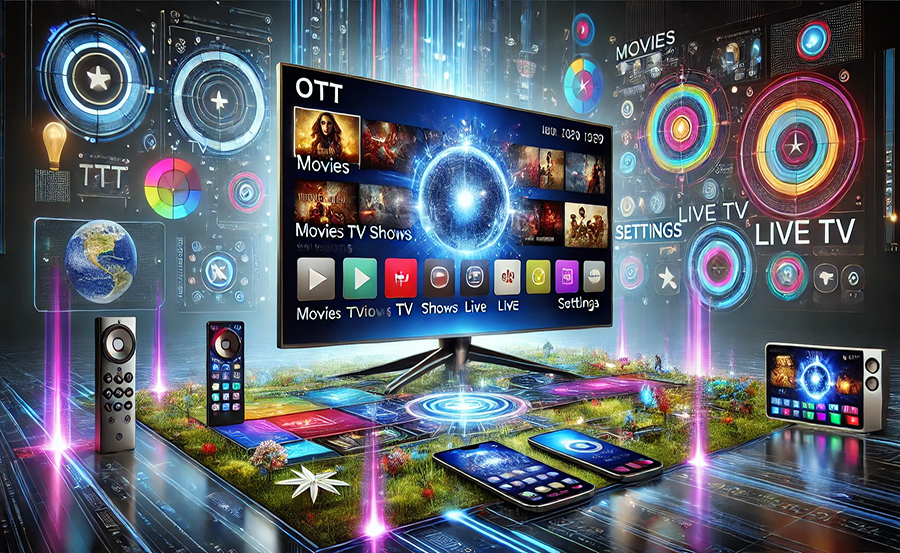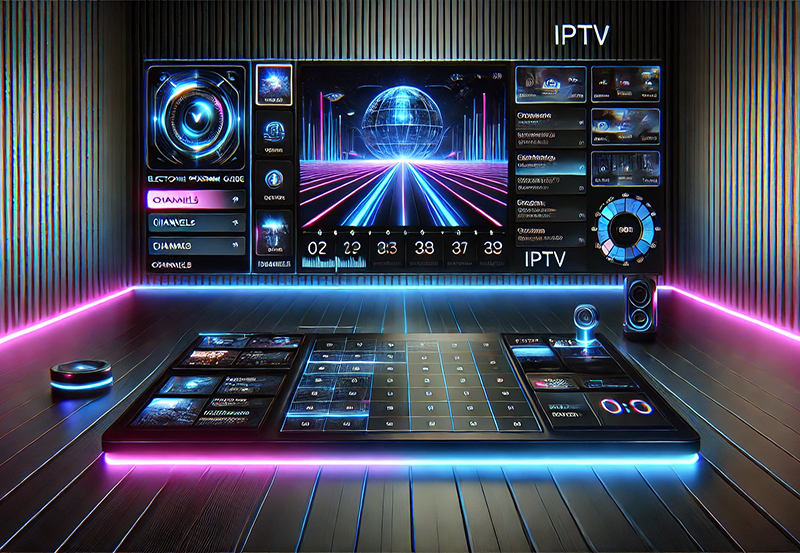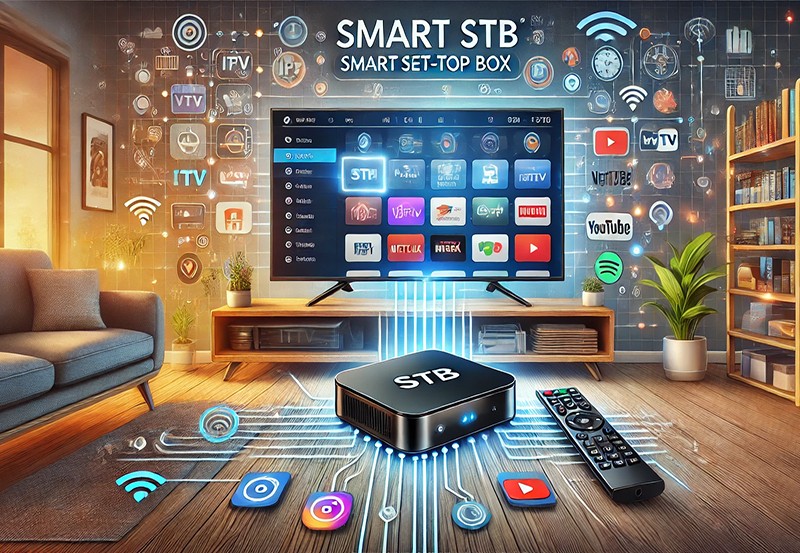In today’s world, entertainment is at the tip of our fingers. The convenience of watching whatever we want, whenever we want, across multiple devices, defines the essence of Over-the-Top (OTT) streaming. However, with so many devices and options available, ensuring full compatibility can seem daunting. This guide is designed to unravel the complexities of OTT player compatibility, exploring how to enjoy IPTV better with multi-device streaming, so you no longer need to worry about missing out on your favorite shows and movies.
Understanding OTT and IPTV: What’s the Difference?
OTT stands for “Over the Top” and refers to media services delivered directly over the internet without traditional cables or satellite services. It’s a method that has revolutionized how we consume content—be it movies, series, or live television. Meanwhile, IPTV—or Internet Protocol Television—takes a similar route but often involves a subscription service delivering television content over a private network.
While both OTT and IPTV bring entertainment to your screen, IPTV often emphasizes more curated experiences with options like ‘IPTV with movies and series’ and often bundles premium services. OTT, on the other hand, thrives on flexibility and a promise of viewing content anywhere, anytime, over mainstream public internet. This distinction is crucial when considering OTT player compatibility across devices.
Streaming Tip:
Upgrade your game day experience with IPTV Sports for live and on-demand coverage of all major leagues.
The Rise of Multi-Device Streaming
Gone are the days when television meant a sole family room TV. Today, content is streamed on a plethora of devices—smartphones, tablets, desktops, and even game consoles. As people increasingly wish to ‘stream smarter,’ multi-device accessibility becomes not just a perk but a necessity.
With IPTV and OTT services like Netflix, Hulu, and Amazon Prime stepping into this space, they not only provide premium IPTVs but also ensure seamless connectivity across different platforms. This capability to switch from one device to another without losing continuity is where OTT players have truly changed the game.
Key Components of OTT Players
The functionality of OTT players primarily revolves around three aspects: Content Delivery, User Interface, and Device Compatibility. Each of these components plays a crucial role in providing a coherent viewing experience.
Content Delivery: The Core of Streaming Services
At the heart of any OTT player lies its content delivery network (CDN). This backbone ensures that whether you are looking at a screen in New York or Tokyo, the content reaches you in crisp, high resolution without annoying buffering. With the increasing demand for IPTV with movies and series, the robustness of one’s CDN determines the quality of experience.
User Interface: Navigating with Ease
No matter how good the content, if users can’t find it easily, it doesn’t matter. The interface of an OTT player must be intuitive. It should make browsing and searching for ‘premium IPTV’ services a straightforward task without complex steps. This simplified navigation is crucial for retaining customer satisfaction and enhancing the OTT experience.
Personalization and Recommendations
Modern OTT players leverage machine learning to understand viewer preferences, curating lists and pushing recommendations. Personalized suggestions ensure that viewers spend more time enjoying rather than searching, creating an enjoyable IPTV experience.
Ensuring Device Compatibility: The Technical Aspects
Multi-device streaming raises questions about compatibility. Different devices, be it Android, iOS, Windows, or smart TVs, have varied specifications. Thus, for an OTT player to claim true multi-device compatibility, it needs to adjust to various operating systems’ demands seamlessly.
Cross-Platform Capability
Developing apps that run smoothly across platforms is not as easy as it might seem. It involves understanding the eccentricities of each operating system and evolving alongside their updates. An OTT player that hopes to make an impact must ensure cross-platform capability to ‘enjoy IPTV better.’ This involves regular testing and updates to fix any glitches or bugs hindering performance.
Utilizing HTML5 and Adaptive Streaming
In the quest for device compatibility, adopting technologies like HTML5 and adaptive bitrate streaming plays a significant role. HTML5 enables videos to play directly in a web browser without needing additional plugins, making the experience consistent across different browsers and devices.
Adaptive streaming adjusts the video quality in real time according to the viewer’s internet speed. This ensures continuous play without interruptions, enhancing the ‘stream smarter’ capability no matter the device or network conditions.
Tackling the Challenges in OTT Compatibility
Despite the multitude of technological advancements, maintaining flawless OTT compatibility comes with its share of challenges. Let’s take a look at some common hurdles and potential solutions.
Handling Diverse Internet Speeds
One of the most pressing issues is varying internet speed affecting streaming quality. The answer lies in employing efficient buffering systems and CDNs to ensure continuity.
OTT services are investing in technologies allowing viewers with slower internet connections to lower video resolutions rather than face constant buffering, thereby offering a smoother experience overall.
Security and Privacy Concerns
With increased accessibility comes the risk of potential security breaches and unauthorized access. OTT players need to implement secure protocols to protect user data and prevent breaches. End-to-end encryption and other security measures must be high on the priority list for anyone wishing to provide a solid premium IPTV service.
Future Trends in OTT Player Developments
The ever-evolving nature of technology means that the future holds promising innovations in OTT player compatibility. As companies continue to invest in better user experiences, let’s glimpse into some upcoming trends.
5G Integration
The promise of 5G is not just faster internet. It’s a whole new world of possibilities, especially for OTT platforms, providing high-speed content delivery with minimal latency.
As 5G becomes more widespread, we can expect OTT players to exploit its benefits aggressively. This high-speed internet will make ‘stream smarter’ not just a possibility but a standard, boosting the overall IPTV experience.
Expanding Smart Home Integrations
With smart homes becoming more mainstream, the integration of OTT players with devices like smart speakers and TVs will become commonplace. The ability to control your viewer experience with voice commands simplifies interactions, reflecting the ‘enjoy IPTV better’ promise.
This trend reinforces the need for robust compatibility and an intuitive design that delivers a cohesive, intelligent home entertainment ecosystem.
A Glimpse at User Expectations: What Do Viewers Want?
Understanding consumer expectations guides OTT players to fine-tune their services. From uninterrupted streaming to diverse content offerings, users demand high standards.
Unmatched Viewing Quality
Users wish for uninterrupted, high-quality streaming. They expect glitch-free viewing experiences that allow them to dive into ‘IPTV with movies and series’ without compromises.
Ease of Use and Reliability
OTT platforms focusing on hassle-free user interfaces often top customer satisfaction lists. They value the ability to start watching on their phones and effortlessly switch to larger screens without losing track.
Conclusion: The Ever-Evolving Landscape of OTT Streaming
The realm of OTT streaming offers incredible opportunities to consume content across multiple devices seamlessly. However, ensuring compatibility and overcoming challenges remains an ongoing effort. With the relentless pursuit of better technologies and understanding user demands, OTT players will continue to evolve, providing seamless experiences for all.
Final Thoughts
As we continue to crave convenience and variety in how we consume content, there’s no doubt that OTT players will expand and innovate their offerings. Embracing new trends, overcoming technical challenges, and responding to user feedback will define the industry’s future.
Frequently Asked Questions

What is OTT Player Compatibility?
OTT Player Compatibility refers to the ability of a streaming service to function smoothly across different devices, ensuring seamless viewing without loss of quality or interruptions.
How Can I Stream Smarter Using OTT Players?
To stream smarter, ensure you’re using a device-compatible OTT player with a solid internet connection. Opt for providers offering adaptive streaming to maintain quality irrespective of bandwidth fluctuations.
Are All IPTV Services Considered Premium?
No, not all IPTV services are classified as premium. Premium IPTV typically offers enhanced features, more extensive content libraries, and superior streaming quality compared to basic services.
What Devices Support OTT Streaming?
OTT streaming supports a wide range of devices including smart TVs, desktops, laptops, tablets, and smartphones. Compatibility varies by service, so it’s essential to check guidelines from your chosen provider.
Can I Enjoy IPTV Better with Advanced Technology?
Yes, features like adaptive bitrate streaming, 5G, and responsive apps enhance your viewing experience, making it possible to enjoy IPTV better with higher quality, fewer disruptions, and across multiple devices.
IPTV Security Features That Put Cable TV to Shame





